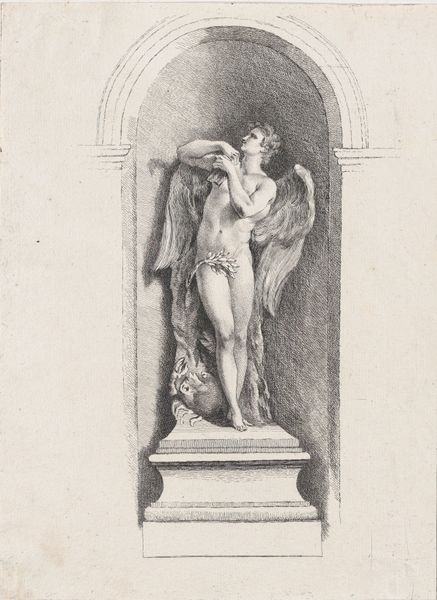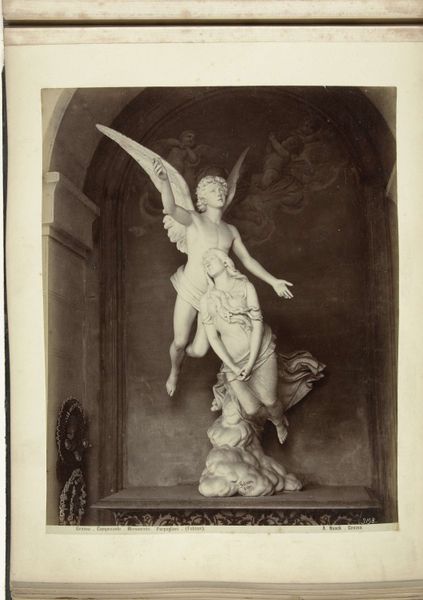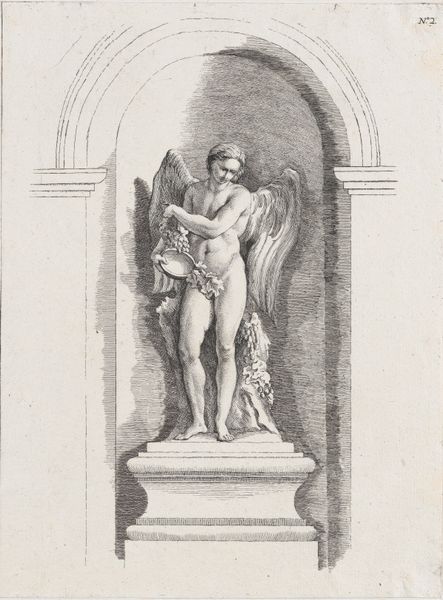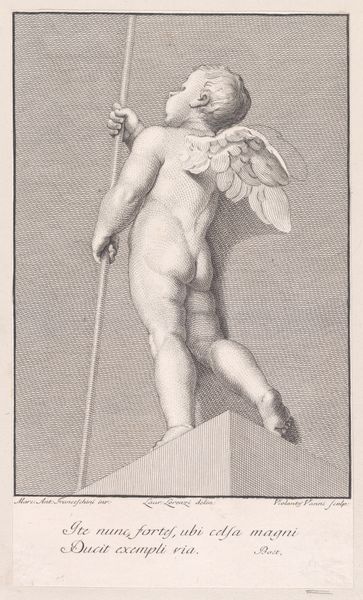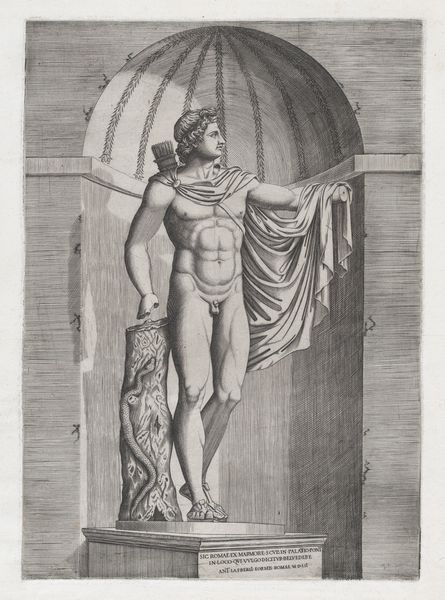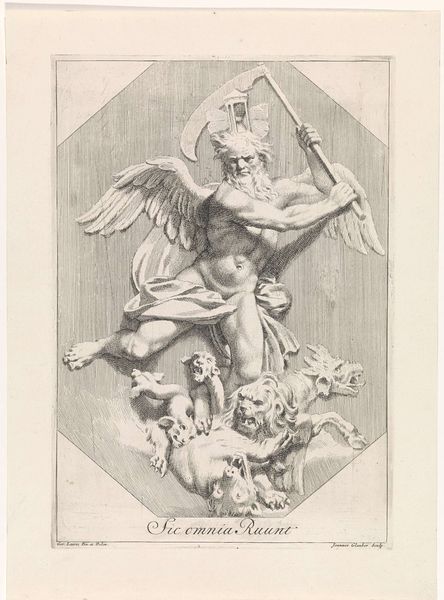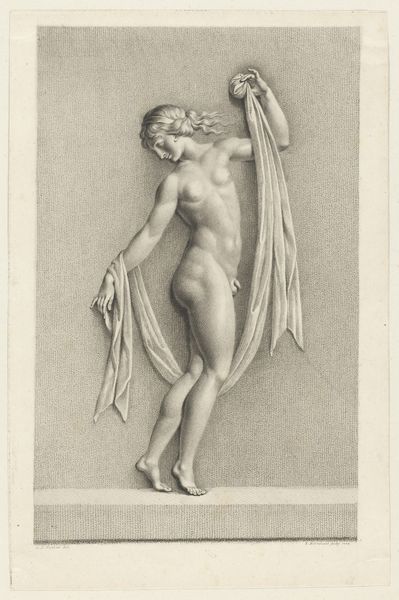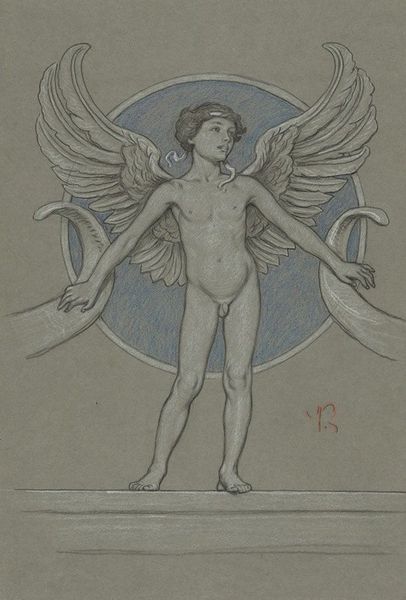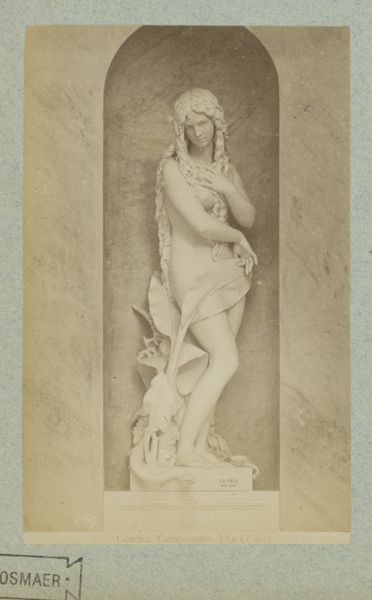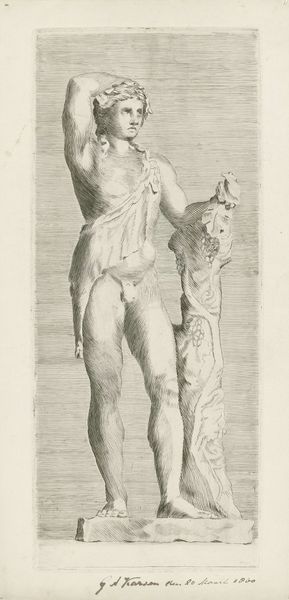
drawing, paper, ink
#
drawing
#
neoclacissism
#
statue
#
allegory
#
landscape
#
figuration
#
paper
#
ink
#
academic-art
Dimensions: height 442 mm, width 318 mm
Copyright: Rijks Museum: Open Domain
Editor: So, this is "Ontwerp voor een standbeeld: Overwinning" by Bartholomeus Ziesenis, created in 1799. It's an ink drawing on paper. There's a winged figure of Victory holding a wreath. It’s a preparatory drawing, it seems... the statue would presumably have been stone. I’m really struck by the use of a comparatively "cheap" material like ink and paper to design such an ostentatious display piece. How can that inform how we approach it? Curator: Exactly! It's critical to consider the materiality. Ink and paper allowed Ziesenis to rapidly prototype his concept for a monument celebrating triumph. Consider the labor involved; a drawing is relatively quick compared to carving marble. How does this influence your reading of the subject? Editor: Well, I guess it highlights the distance between the ideal of "victory," a finished monument of enduring stone, and the preliminary labor and materials needed to visualize and realize it. Does the apparent delicacy of ink on paper offer a commentary on the supposed permanence of triumph? Curator: An insightful interpretation. Let's push further: how does the mass production of paper in the late 18th century, alongside the skilled labor required for detailed ink work, shape your understanding of this piece as a commodity and a symbol? Think about access and distribution. Editor: So, on the one hand, the image of "Victory" conveys an elite concept of power and commemoration, yet the actual drawing becomes reproducible, accessible potentially to a wider audience. That contrast feels very charged. Curator: Precisely. It invites us to think about the social dynamics of art production and reception in a time of revolution and changing class structures. Editor: I never considered that such a drawing might carry implications of both artistic vision and its mass dissemination as well. It feels much more complex now! Curator: And that complexity, recognizing both the artist’s intention and the influence of material reality and consumption, is the rewarding challenge of art history.
Comments
No comments
Be the first to comment and join the conversation on the ultimate creative platform.
